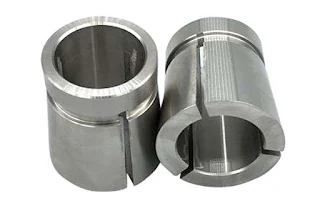3D Printing of High-Temperature Resistant Resin Rapid Tooling, Small-Batch Injection Molding
In the fast-paced world of product development, rapid prototyping and cost-effective manufacturing solutions are paramount. When a company introduces a new product that necessitates injection molding, the traditional approach often involves investing heavily in steel molds. However, this can be prohibitively expensive, especially for small businesses or startups with limited budgets. Furthermore, the uncertainty surrounding large-scale production can be daunting, leaving businesses hesitant to commit significant resources without sufficient validation.
Enter Dongguan Yigu Technology, a pioneer in offering a revolutionary solution: 3D printing of high-temperature resistant resin rapid molds, specifically designed to cater to the needs of small-batch injection molding production. This innovative approach not only mitigates the financial risks associated with traditional steel molds but also accelerates the product development cycle, allowing businesses to test and refine their products more efficiently.
The Advantages of 3D Printed Resin Molds
- Cost-Effectiveness: The primary appeal of 3D printed resin molds lies in their affordability. Compared to steel molds, which can cost tens of thousands of dollars, resin molds offer a fraction of that investment. This makes them an ideal choice for small-scale production runs or prototype testing, enabling businesses to evaluate market reception without breaking the bank.
- Rapid Turnaround: 3D printing technology enables Dongguan Yigu Technology to produce resin molds at an unprecedented speed. Traditional mold-making processes can take weeks or even months, whereas 3D printing can reduce this timeline to days. This rapid turnaround time accelerates the product development cycle, allowing companies to bring new products to market faster.
- Flexibility and Customization: One of the key strengths of 3D printing is its ability to create highly customized and complex designs that might be difficult or impossible with traditional methods. Resin molds can be tailored to meet specific product requirements, ensuring a perfect fit and optimal performance. This flexibility is particularly valuable in the early stages of product development when iterations are frequent.
- Reduced Risk: By opting for small-batch production using resin molds, companies can significantly reduce the risks associated with large-scale production. They can produce a limited number of samples, test their performance, gather feedback, and make necessary adjustments before committing to a larger production run. This iterative approach not only saves money but also ensures that the final product meets market expectations.
How Dongguan Yigu Technology is Leading the Way
Dongguan Yigu Technology stands out in the industry by leveraging state-of-the-art 3D printing technology to create high-temperature resistant resin molds that can withstand the rigors of injection molding. Their expertise in material science and additive manufacturing enables them to produce molds that are durable, precise, and capable of replicating fine details.
Moreover, Dongguan Yigu Technology offers comprehensive rapid prototyping services tailored to the needs of each client. From initial consultation to mold design, production, and final product delivery, they provide end-to-end support, ensuring a seamless and efficient process. Their team of experienced engineers and technicians works closely with clients to understand their unique requirements and deliver customized solutions that meet or exceed expectations.
Conclusion
In an era where speed-to-market and cost-efficiency are paramount, Dongguan Yigu Technology's 3D printing of high-temperature resistant resin molds represents a game-changing advancement in small-batch injection molding production. By offering a cost-effective, rapid, and flexible alternative to traditional steel molds, they are empowering businesses to innovate faster, reduce risks, and stay ahead of the competition.
For companies embarking on new product development journeys, the ability to test and refine their designs through small-batch production using resin molds is invaluable. It not only saves valuable resources but also ensures that the final product is market-ready, meeting the highest standards of quality and performance. As the industry continues to evolve, Dongguan Yigu Technology's innovative approach is poised to become the new standard in rapid prototyping and small-batch production.





